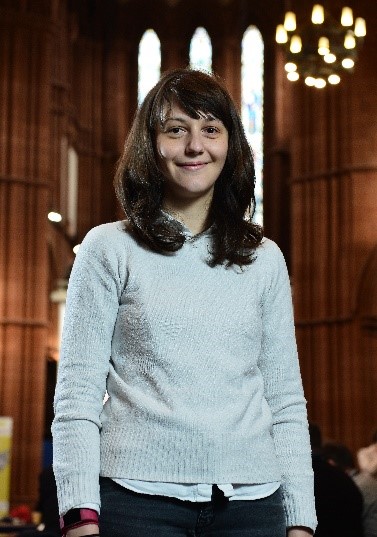Sara Ottoboni
Published: 7 May 2019
Faculty of Engineering, Department of Chemical and Process Engineering #Purification, #continuous isolation, #active_pharmaceutical_ingredient-related_impurities-solvents_interaction, #prototyping
|
School/College |
Faculty of Engineering, Department of Chemical and Process Engineering |
|
|
Sara.ottoboni@strath.ac.uk |
|
Telephone |
0141 444 7109 |
Research vision
In the pharmaceutical sector, compounds forming the drug and especially the active pharmaceutical ingredients (API’s) are required to be pure, in accordance with the regulatory authorities’ rules. The isolation stage is used to remove the impure liquid phase and to remove surface impurities from the crystalline product. Physico-chemical properties of crystals formed during the crystallization process and the solvents selected for the crystallization process influence the performance and the efficacy of isolation. Lots of effort was made in the last few decades to understand how to improve the crystallization stage. Relatively less effort has been made to understand the chemo-physical and process characteristics affecting the properties of the final isolated product. Consequently, the isolation stage can be responsible for extending the API manufacturing time, the consumption of high quantities of materials and solvents and, sometimes, the requirement for isolated product post-processing to overcome variation in crystallized material properties caused by isolation.
The aim of my project is to understand, from a microscopic to a macroscopic point of view, how the physico-chemical properties of the crystallized material and the washing solvents used, in combination with the filtration, washing and drying approaches, can influence the final isolated product characteristics. To broaden the field, an alternative analytical technique for the pharmaceutical field, Time-of-Flight Secondary Ion Mass Spectrometry (TOF-SIMS), allows investigating the surface/sub-surface of crystal to localize adsorption of related impurities and help to design isolation strategy and solvent selection.
A major objective of this work is to reduce API manufacturing time in the R&D stage, to minimize chemical, especially solvent consumption, and to maximize the isolation knowledge gathered to design an optimal isolation process. Further improvements of a developed lab/small scale isolation prototype unit will be done to address isolation of challenging compounds.
Expectations from collaboration
I am looking forward to engage with other academics to cover some gaps in isolation and I would like to collaborate with industries to test the lab/small scale isolation prototype unit with challenging pharmaceutical and food industry compounds
Key Skills
- continuous isolation,
- filtration and washing of pharmaceutical API,
- surface engineering,
- wettability,
- prototyping,
- material engineering,
- coating and interfaces,
- nanoparticle synthesis,
- particles functionalization,
- particles and powder beds characterization
First published: 7 May 2019


